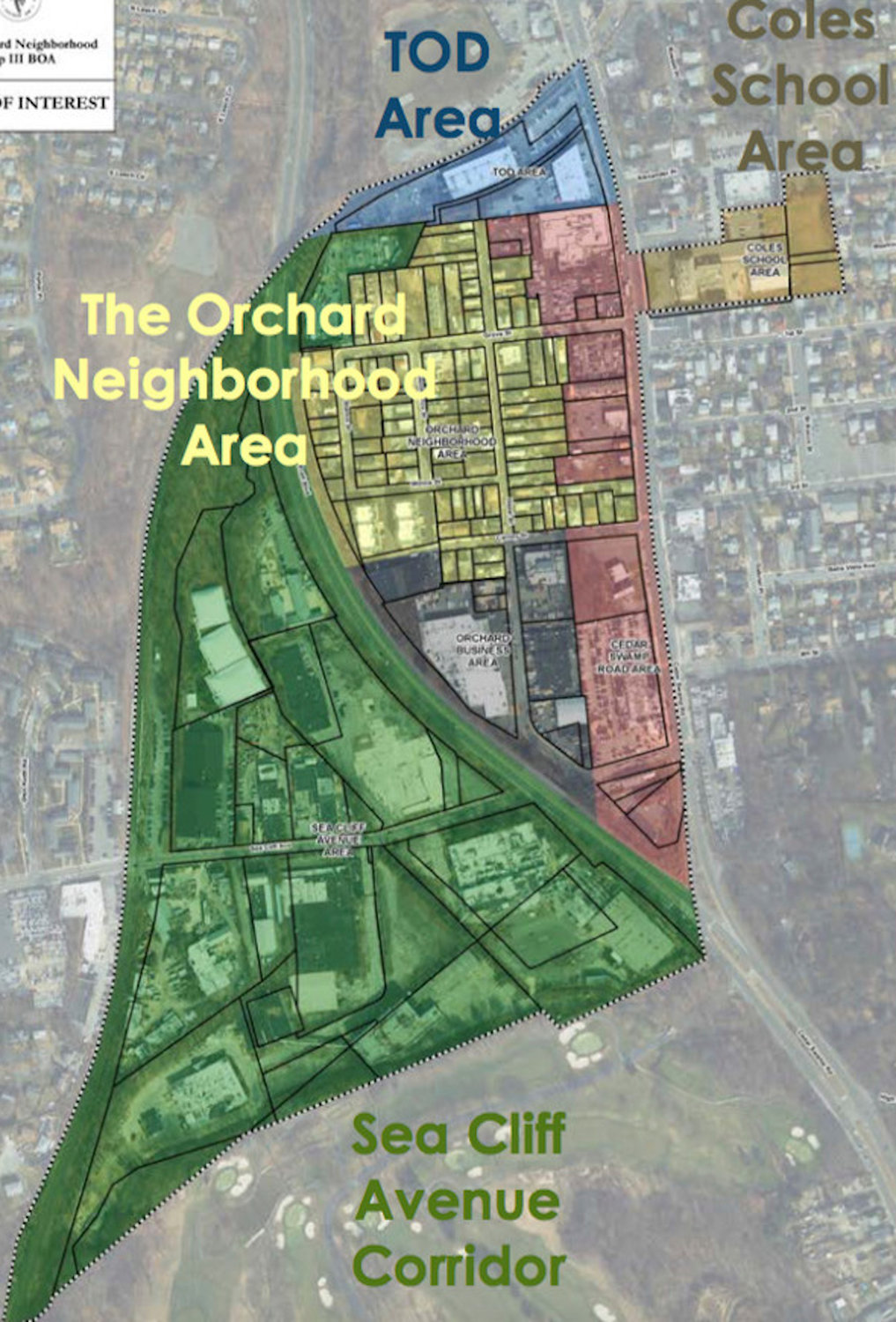Communities voice concerns on Orchard
As preparations for the potential revitalization of the Orchard neighborhood in Glen Cove continue to move forward, several surrounding communities and outside governmental agencies have provided the city with comments.
The area, designated a Brownfield Opportunity Area, encompasses the Orchard, Cedar Swamp Road, the Sea Cliff Avenue industrial corridor and the Glen Street Long Island Rail Road Station. The revitalization plan seeks to define how the area could be improved and offer developers recommendations to do so that are supported by the community.
In late January, environmental planning firm Nelson, Pope & Voorhis, the city’s chief consultant on the BOA, developed an outline for the project and sent it to the city. In accordance with the New York State Department of Environmental Conservation’s State Environmental Quality Review Act, the city sent that outline to the Village of Sea Cliff and the Town of Oyster Bay at the end of January. The New York Department of Transportation and MTA were also contacted. All parties were invited to provide comments on the project, all of which the city received by March 8.
With the southern portion of the BOA being so close to Sea Cliff, the village’s officials have been among the most vocal in regards to their concerns.
Sea Cliff Mayor Ed Lieberman said his concerns lie in the area of the safety and welfare of pedestrians and drivers in the area. Sea Cliff already experiences issues with traffic, he said, because of Glen Cove’s Garvies and Villa projects. He said that he fears that the BOA project could result in even more traffic in the area, increasing the likelihood of car accidents and thus potentially endangering drivers and pedestrians alike.
Lieberman said he has not yet come to a conclusion on how he feels about the project, and wants to address potential environmental issues that could result from the developments, as well as exactly what types of developments will be in the area, such as manufacturing or retail.
While he acknowledged that the decision is within the city’s jurisdiction, Lieberman said that communities such as Sea Cliff should be kept in mind.
Bruce Kennedy, Sea Cliff’s village administrator, said that he generally supports the project, as the “area could use some investment in infrastructure.” He sited empty fields on the sides of Sea Cliff Avenue as well as a need for more housing in the area as primary reasons for his support.
Much like Lieberman, Kennedy hopes that the city can address pedestrian safety when planning for the developments. He said that he would like to see an increase in the size of sidewalks, which would make it easier for the area to accommodate more pedestrians and cyclists.
Kennedy said that he is generally content with the way the city has advanced the project so far. “It appears that [Glen Cove] Mayor Tenke is taking a very steady, sober approach to this proposed development,” he said.
According to Glen Cove CDA grant writer and administrator Jocelyn Wenk, the Town of Oyster Bay submitted several lengthy comments, including issues regarding traffic and the preservation of “suburban community character.” Despite multiple phone calls, representatives from the town could not be reached for comment.
Wenk also said that the MTA and Department of Transportation have announced that they support the project.
During its meeting on March 26, the Glen Cove City Council voted 5 to 1 to adopt the outline proposed by Nelson, Pope & Voorhis. Councilwoman Marsha Silverman was the only opposing vote. The firm will now move forward with preparing a general environmental impact statement draft, which will provide full details on the effect developments will have on the area. The draft will be presented to the city in May, and a public hearing about the future of the Orchard will be held in June.
On the morning after the meeting, Tenke said that he also shared the traffic concerns. “The last thing that [residents] want is a high level of traffic going through there,” he said. He explained that Nelson, Pope & Voorhis will be conducting an overall traffic study for the BOA. In the future, prospective developers will also have to conduct traffic studies around the specific area of the BOA where their development may take hold.
Tenke also said that he is optimistic about BOA’s future. “It’s an area that has been for the most part overlooked, and now the light is shining on it,” he said.
Alyssa Seidman also contributed to this story.







